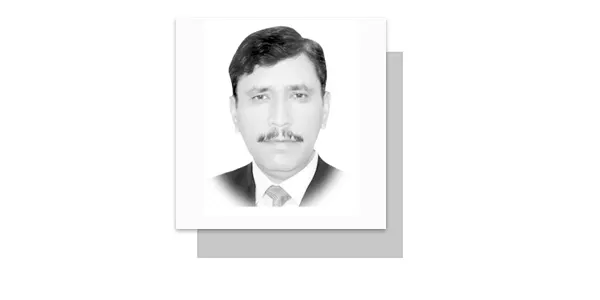PAKISTAN is currently facing significant economic challenges, and two international lenders, the Asian Development Bank and the World Bank, have expressed concerns about the country’s economic situation while offering potential solutions. These concerns revolve around Pakistan’s history of acquiring loans and the impending challenges of repaying existing debts. The lenders are apprehensive because, while the government is diligently paying the interest on loans, it appears to be neglecting the repayment of the principal amount.
In the preceding year, Pakistan’s combined federal and provincial revenues amounted to approximately 9.63 trillion rupees, whereas the expenditures reached 16.15 trillion rupees. After accounting for the provinces’ share, the federal government was left with only 1.8 trillion rupees, while loan repayments required staggering Rs 5.3 trillion rupees. Separate allocations were also necessary for defence and salary payments, all of which were ultimately met. Last year, Pakistan witnessed a remarkable increase of approximately 45% in the payment of both external and internal loans compared to the previous year. It is highly likely that this upward trajectory will persist in the coming years.
Despite the apparent inability of the economy to sustain the repayment of external loans, Pakistan seems to be committed to paying interest on these loans regularly. The government’s efforts are geared towards preventing default. Up to this point, these efforts have been successful, though the sustainability of this approach remains uncertain. The Asian Development Bank’s recent report offers a sobering prognosis, predicting that Pakistan’s economic growth rate will hover around a meagre 0.9% in the upcoming year, while inflation at 25%. The implications are clear: a dearth of employment opportunities alongside the burden of inflation will weigh heavily on the populace, leaving little room for optimism regarding the government’s capacity to address these challenges effectively. It is important to recognize that the government’s ability to generate revenue through taxation is limited. In the absence of adequate taxation of the affluent, the burden is shifted to the general public.
The World Bank, too, has expressed concern about not just Pakistan’s economic crisis but also the development crisis. The bank’s assessment indicates that approximately 40% of the population, equating to over 95 million people, lives below the poverty line. Shockingly, over the span of just one year, the number of individuals grappling with hunger and disease has surged by a staggering 1.2 million. To ameliorate the financial landscape, the World Bank recommends boosting revenues, eliminating tax exemptions, and reducing expenditures. According to the bank, Pakistan could potentially double its revenue by increasing taxes on agriculture and real estate, curtailing unnecessary expenses (particularly related to provincial governments), and scrapping tax exemptions.
So, why are we facing this economic meltdown and, consequently, the human development crisis? The answer to this question lies in plain sight. Democracy fundamentally ensures that the powerful do not oppress the weak. It upholds fundamental rights, freedom of expression and the principle of accountability for those in power. These principles serve as checks and balances against the dominance of capitalistic elite. The loans Pakistan received were aimed at strengthening democracy by expanding the size of economy, with the intention of ensuring that the powerful elite would consider it their duty to repay these loans for the betterment of the nation.
However, the manner in which these loans were allocated reflects a stark contrast. On one hand, taxes have been relentlessly imposed on the common citizens, leading to their increased financial burden. On the other hand, redundant government departments remain intact because they serve as a vote bank for political parties. In this time of crisis, when the public is anxiously seeking basic amenities, the government ignores the need of slashing own expenses, including allowances and salary returns.
This mindset, which fails to recognize the constitutional significance of local governments, exposes the glaring disparities within the capitalist system now in place in Pakistan. It highlights the exploitation of the public and reveals how external loans intended to fortify the nation’s economy were misappropriated. Instead of serving as a lifeline for the weak, these loans have been treated as mere rewards for loyalty to the capitalist powers. Take the case of the IMF chief advice whereby she says that when we advocate for enhancing fiscal space, it implies imposing taxes on the affluent while safeguarding the weaker segments of society. In essence, this is a call for policies that prioritize equity. In contrast, the prevailing mentality favours elitism and remains oblivious to the struggles of the masses.
This pattern of behaviour, where the wealthy and influential benefit from loans and government policies while the less privileged bear the brunt of economic challenges, reflects a lack of social and economic equity. It also undermines the principles of democracy and accountability that should guide the allocation of resources and public funds for the collective welfare of the nation. The economic challenges facing Pakistan are inextricably linked to its political landscape. To comprehend the intricacies of the nation’s economic ups and downs, one must look beyond the explanations offered by economists and scrutinize the decisions and actions of those in political power.
—The writer is politico-strategic analyst based in Islamabad.
Email: [email protected]










